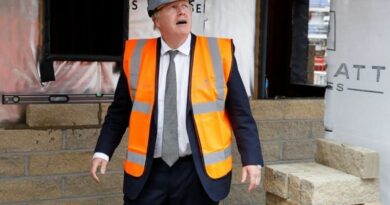UK unemployment falls amid record rise in job vacancies
June and July figures show rocketing demand for workers as country emerged from Covid lockdown
- Coronavirus – latest updates
- See all our coronavirus coverage
Last modified on Tue 17 Aug 2021 03.32 EDT
Unemployment fell in June as workers made redundant during the pandemic appeared to respond to a record rise in vacancies to re-enter the labour market and secure a job.
According to official figures, the unemployment rate dropped to 4.7% in the three months to June, down 0.2 percentage points on the previous quarter. Data for July showed the number of job vacancies passed 1m for the first time on record, the Office for National Statistics said.
The proportion of the working population out of work is still higher than before the pandemic, when unemployment was 3.9%, but the reopening of the economy and the rocketing demand for workers in some industries has pushed up the number of people in work.
Separate figures for July from HMRC also pointed to a strong recovery in the labour market, even as almost 2 million people remained on furlough, after the number of payrolled employees increased by 182,000 to 28.9 million.
The figures beat the forecasts of City analysts, who expected the labour market to recover more slowly as lockdown restrictions eased.
Wages jumped 7.4% without bonuses and 8.8% including bonuses to reinforce the message from employers that where shortages exist, workers can expect to receive signing on fees and retention bonuses.
Samuel Tombs, the chief UK economist at Pantheon Macroeconomics, said the strong growth in the number of jobs this year and the rise in wages were unlikely to alter the view of the Bank of England, which has forecast that wages growth will lose momentum as the economy returns to more normal levels of activity.
He said: “Most public sector workers likely will see modest increases in their pay again next year, while job losses in the wake of the furlough scheme will help to keep a lid on private-sector settlements.
“Accordingly, we continue to think that the labour market will lose its current momentum, enabling the monetary policy committee to wait until the first half of 2023 to raise [interest rates].”
However, the data showed the number of hours worked remained almost 5% below pre-pandemic levels, and analysis by the ONS of wages showed that stripping out “the coronavirus effect” that most wage rises were no more than 3.5%.
The number of employees also remained 201,000 below February 2020 levels, indicating that many self-employed people who lost work in the previous 16 months were still unable to return to the labour market.
The chancellor, Rishi Sunak, said: “Today’s figures show that our Plan for Jobs is working – saving people’s jobs and getting people back into work. I know there could still be bumps in the road but the data is promising – there are now more employees on payrolls than at any point since March 2020, and the number of people on furlough is the lowest since the scheme launched,.”
Source: Read Full Article


